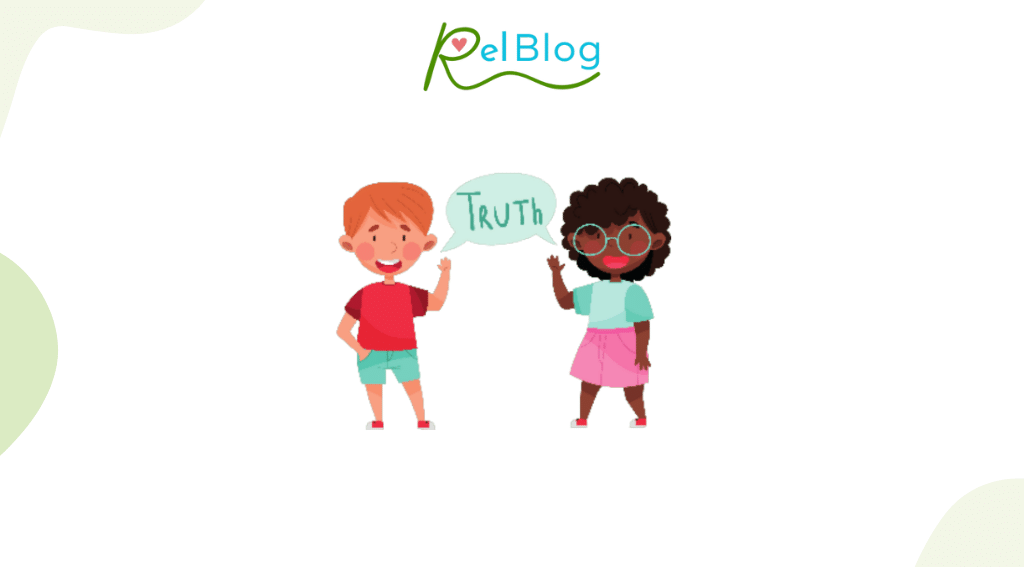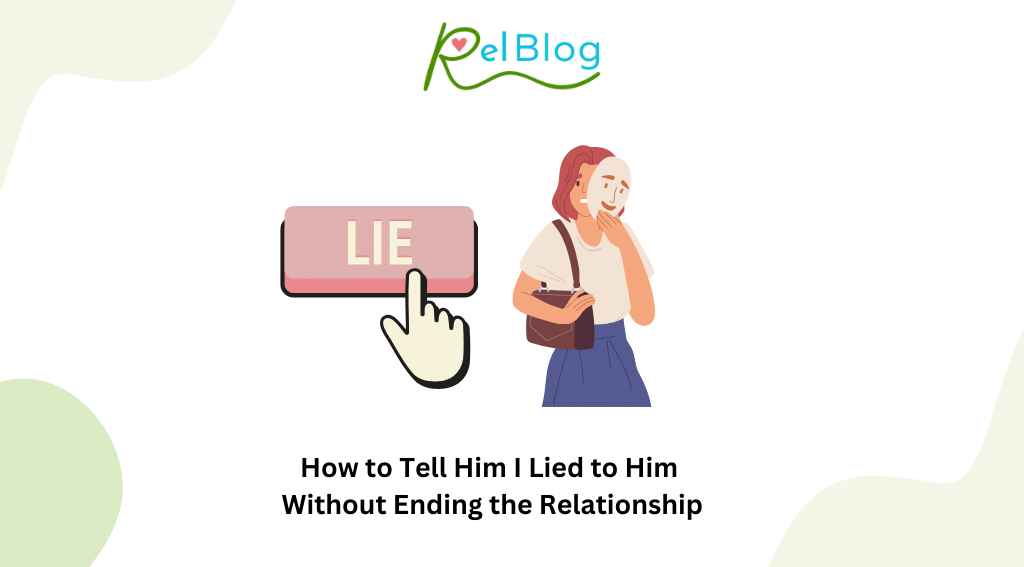Honesty is “universally regarded as the cornerstone of trust and reliability” in relationships. We are only human, though, and occasionally we unintentionally become entangled in a lie web. You’ve come to the right place if you recently told your partner a big lie and aren’t sure how to admit it without endangering your relationship. We’ll walk you through the delicate task of confessing your lie to your partner while minimizing the potential harm in this article, which Rel Blog brought to you. We aim to give you the resources and tactics you need to deal with this difficult situation and reestablish trust.
evaluating how the lie affected your relationship
A lie’s effects can be profound and far-reaching when it is told in a relationship. In order to find a way to mend and rebuild trust, it is crucial to evaluate the consequences of the lie and comprehend its effects. When determining the effect of a lie on your relationship, take the following into account:
- Emotional harm: Lying can seriously harm both parties’ emotions. It’s critical to comprehend the extent of the damage because it lays the foundation for the healing process.
- Betrayal and trust: Lying violates trust, which is an essential part of any relationship. Moving forward requires determining the extent to which this betrayal has affected trust.
- Communication breakdown: Since honest and open dialogue can be difficult, lies frequently cause communication breakdowns. Finding areas that need improvement can be done by assessing the effect on communication patterns.
Overall, carefully examining the emotional harm, trust issues, and communication breakdown that may have occurred is necessary to assess the effects of a lie on your relationship. Additionally, it’s crucial to keep in mind that reestablishing trust requires time, effort, and honest communication on the part of both parties.
Key Takeaways
- Consider the emotional harm that the lie has brought about.
- Assess the effect on trust and point out areas for improvement.
- Think about how the lie has impacted the relationship’s communication.
- It takes time, work, and honest communication to restore trust.
Recognizing your lie’s motivation
It’s crucial to look into the underlying motivation behind our decision to lie. We can better understand our own behavior and make changes for the better by comprehending our motivations. Here are some important things to think about:
- Fear: A lot of lies are motivated by a fear of repercussions or judgment. We might be tempted to mislead others or give out false information when we are concerned about the potential fallout.
- Protection: On occasion, we lie in order to defend our own interests or those of those we care about. This might entail protecting someone from harm, maintaining a relationship, or avoiding conflict.
- Lies can be used to manipulate circumstances or people in our favor. We might attempt to gain control, power, or unjustified advantages by fabricating the truth.
- Desire for acceptance: In some circumstances, we might make up details to fit in or win other people over. This desire for acceptance can act as a powerful inducer of dishonesty.
Regardless of the motivation behind a lie, it’s important to understand that lying can damage trust and have long-term effects. We can take more responsibility for our actions and work toward developing more genuine and honest relationships in the future by thinking back on the reasons we lied.
Key Takeaways
- We can better understand our behavior by comprehending the motivation behind a lie.
- Lies are frequently motivated by fear, defense, manipulation, and the desire for acceptance.
- Lies undermine trust and can have long-lasting effects, regardless of the reason.
- We can take responsibility and work toward developing more genuine relationships by considering our reasons for lying.

selecting the appropriate conversational time and location
Timing and location can have a significant impact on the outcome when having important conversations. Here are some important things to think about:
- Privacy: Choose a quiet, private area where you won’t be overheard or easily interrupted. This will make it easier for everyone to feel secure and at ease.
- Comfort: Pick a location where everyone involved can feel comfortable. It can be easier to unwind and promote open communication when you’re in a relaxed environment.
- Avoid distractions by choosing a time and location that will reduce them. Electronic devices should be put away or moved to a time with fewer outside disturbances.
- Emotional readiness: Assess the participants’ emotional state. As this can have a significant impact on the conversation’s effectiveness and avoid misunderstandings, make sure they are receptive and at ease.
You can foster productive dialogue and raise the likelihood of a successful outcome by taking these factors into account.
Key Takeaways
- To ensure “confidentiality,” pick a quiet, private area.
- To make everyone feel at ease, choose a setting that is comfortable.
- To keep your attention throughout the conversation, stay away from distractions.
- To encourage effective communication, evaluate emotional readiness.
Taking an honest and compassionate stance
is essential when interacting with others. By putting ourselves in their shoes and treating them with empathy, we can build trust and foster strong connections.
It is important to communicate openly and honestly, sharing our thoughts and feelings in a respectful manner. This approach creates a safe environment where people feel heard and appreciated. When utilizing a compassionate and honest approach, it is crucial to actively listen to others.
Paying attention to their words, body language, and emotions allows us to understand their perspective fully. By doing so, we can respond in a way that validates their feelings and concerns. It is also essential to be patient and understanding, giving others the time they need to express themselves fully.Another aspect of this approach is the ability to provide constructive feedback in a compassionate manner.
Instead of criticizing or blaming, focus on offering suggestions for improvement and highlighting the person’s strengths. This approach encourages growth and development and helps build self-esteem.In summary, means treating others with kindness, listening actively, and communicating openly. By doing so, we can establish meaningful connections, foster a positive environment, and promote personal growth and understanding.
Key Takeaways
- Treat others with kindness and empathy, putting yourself in their shoes.
- Practice active listening to fully understand others’ perspective.
- Communicate openly and honestly, sharing your thoughts and feelings respectfully.
- Provide constructive feedback that focuses on growth and highlights strengths.
Getting ready for his response and potential repercussions
Being ready is essential if you want to manage a situation’s potential effects and consequences. You can navigate the aftermath more confidently by taking preventative measures. Here are some tactics to think about:
1. assemble data:
- Examine a person’s typical reactions to situations that are similar.
- Think about their personality, manner of communication, and prior behaviors.
- Ask those who have experienced similar situations for advice or insight.
2. Consider potential outcomes:
- Observe the person’s potential emotional or intellectual reactions.
- Identify any potential repercussions for both parties.
- Consider the immediate and long-term effects of each potential result.
3. Prepare your response:
- Think about various strategies and choose the one that will work the best.
- If necessary, prepare your arguments, evidence, or counterarguments.
- Consider how to convey your message in a polite and effective manner.
4. Maintain adaptability and an open mind:
- Be ready for unforeseen outcomes or reactions.
- Maintain your approach’s flexibility and willingness to modify your plan if necessary.
- Be open to finding a compromise and take into account alternative viewpoints.
Key Takeaways
- Learn more about the typical response patterns of the person.
- Consider the effects of any potential outcomes.
- Plan your response, taking into account various strategies and polite communication.
- Be flexible and receptive to unanticipated outcomes or reactions.

gently breaking the news and admitting your error
It’s crucial to approach the situation with sensitivity and compassion when delivering difficult news. You can lessen the impact of the news and keep your audience’s trust by carefully selecting your words and apologizing for any errors that may have been made. Here are some pointers for handling your own mistakes with grace and gentleness when breaking the news:
- Pick the right time to deliver the news, allowing for privacy and reducing distractions. Find a cozy setting where the news recipient feels supported.
- Be sympathetic: Recognize that the news might surprise or disappoint you, so approach the conversation with empathy. Show sincere concern for the person(s) involved’ feelings.
- Deliver the news in a cool, collected voice, emphasizing that you are there to support and assist them throughout the process. Avoid sounding dismissive or defensive.
- Accept responsibility for any errors that may have led to the situation if necessary. Acknowledge mistakes without making excuses. Sincerely apologize and refrain from blaming anyone or making excuses. Rebuilding trust and demonstrating integrity can be accomplished by accepting responsibility.
Remember that how you handle your own mistakes and break the news can have a big impact on how the parties involved will react in the future. You can deal with challenging news and work toward reestablishing trust by approaching the situation with empathy and honesty.
Key Takeaways
- Choose an appropriate time and place to deliver difficult news.
- Show empathy and genuine concern for the feelings of those involved.
- Deliver the news calmly and reassure your support.
- Acknowledge any mistakes made without making excuses or shifting blame.
sincerely apologizing and accepting responsibility for your actions
When we make a mistake, it’s critical to admit it, accept responsibility, and apologize sincerely. By doing this, we demonstrate our moral character and dedication to development as both individuals and members of a community. Although it takes courage and humility to take ownership of our actions, doing so is a crucial first step in resolving disputes and restoring trust.
The following are the essential steps to sincerely apologize and accept responsibility:
- Take a step back and consider the situation objectively as you reflect on your actions. Recognize the effects of your actions and any potential harm they may have caused.
- Accept responsibility: Recognize your error without attempting to justify it or place the blame elsewhere. It’s crucial to display sincere regret and responsibility.
- Put yourself in the shoes of those who are impacted by your actions to show empathy. Be understanding and sympathetic to their viewpoints and feelings.
- Sincerely apologize: Express regret for the harm done and offer a sincere apology. Be clear in your admission of guilt and promise to make amends to the other party.
Taking responsibility for our actions necessitates ongoing introspection and a dedication to personal development. Learning from our mistakes, making the necessary adjustments, and showing through our future behavior that we have learned the lessons are all important.
Key Takeaways
- Accept responsibility for your actions and admit your error.
- Be compassionate toward those your actions have impacted.
- Offer an apology that is sincere and heartfelt.
- Make a commitment to improving oneself and making amends.
Transparency and open communication are key to reestablishing trust.
Trust is a key component of any successful relationship, whether it be personal or professional, in today’s rapidly changing world. Rebuilding trust by promoting a culture of transparency and open communication is becoming more and more crucial as we deal with various difficulties and uncertainties. Any strong partnership is built on honest, direct, and clear communication, which enables everyone involved to have a common understanding of the circumstances.
Being open and disclosing information that could have an impact on those involved is part of transparency. We foster a culture where everyone feels included and empowered by embracing transparency. This can be accomplished by regularly updating, sharing pertinent information, and, whenever possible, ensuring that decisions are made collectively. Remember that transparency is beneficial in both ways. In addition to being transparent when sharing information, we should promote open communication and foster a climate where everyone feels free to express their opinions.
Transparency and open communication go hand in hand. It necessitates paying close attention, accepting various viewpoints, and fostering a climate where everyone feels free to voice their opinions. We encourage collaboration, improve problem-solving abilities, and ultimately strengthen relationships by encouraging open communication. Fostering open communication enables us to share our collective knowledge and skills, which results in better outcomes for everyone involved, whether it be through face-to-face conversations, team meetings, or digital platforms.
In conclusion, reestablishing trust necessitates a dedication to open communication and transparency. We can strengthen relationships, promote collaboration, and more easily overcome challenges by fostering a culture that values and promotes these principles. Let’s work toward a brighter and more trustworthy future by embracing transparency and encouraging open communication.
Key Takeaways
- Transparency involves being forthcoming and disclosing information.
- Open communication requires actively listening and acknowledging different perspectives.
- Promoting transparency and open communication strengthens relationships and enhances problem-solving abilities.
allowing him time and space to process the information
When it comes to sharing important or overwhelming information with someone, it’s important to give them time and space to process it. Life can throw unexpected situations our way. When you find yourself in this situation, take the following into account:
- Respect boundaries: Be aware that everyone processes information differently. Give the individual the freedom to choose when and how they want to continue the conversation.
- Support the person by letting them know that you are available whenever they need it. A straightforward message or sincere declaration can go a long way toward expressing your support.
- Avoid applying pressure by keeping in mind that people need time to process information independently. Avoid putting pressure on them to respond right away or demanding answers before they are prepared.
- Be patient: Recognize that it may take the person some time to fully process the information. They must be patient in order to process their feelings and thoughts and accept what they have learned.
Giving someone the space and time to process information shows respect for their feelings and allows them to gather their thoughts. Remember, each person handles situations differently, and by providing support and being patient, you can help them through their own personal journey.
Key Takeaways
- Respect the person’s boundaries and allow them to decide when and how to engage in further discussion.
- Show support by letting the person know you are there for them.
- Avoid pressuring the person and give them time to respond.
- Be patient and understanding as they navigate their emotions and thoughts.

requesting, if necessary, professional assistance
To effectively overcome obstacles, it may be necessary in some circumstances to seek professional assistance. While it’s crucial to attempt to solve problems on your own, consulting experts can offer helpful advice and support. Here are a few examples of situations where expert assistance can be very helpful:
- Concerns about your physical health: If you are having persistent physical symptoms or discomfort, talking to a doctor can help you determine what’s really going on and give you the right care.
- Mental and emotional health: It can be beneficial to seek the assistance of a licensed therapist or counselor if you are having problems with your mental health. They can offer methods for coping with mental health issues like depression, anxiety, stress, and anxiety.
- Financial challenges: When dealing with complicated financial issues, consulting a financial planner or advisor can assist you in creating budgeting, debt management, retirement planning, or overall financial improvement strategies.
- Career coaching: A career counselor or coach can offer advice, evaluate your skills, and assist you in exploring new opportunities if you feel stuck in your professional life or unsure of your career path.
Remember that asking for professional assistance is a proactive step toward personal development and empowerment rather than an indication of weakness. It’s crucial to know when you need help and to have the guts to ask for help from those who can.
Key Takeaways
- Seeking professional help can be crucial in specific situations.
- Experts in various fields can provide guidance and support.
- Assessing your needs and being proactive is essential for personal growth.
- Don’t hesitate to reach out when professional help is required.
Lastly
We appreciate you coming to “Rel Blog.” We sincerely hope that this article has given you useful advice on how to handle the delicate issue of telling your partner the truth ( How to Tell Him I Lied to Him ) while still maintaining a healthy relationship. Keep in mind that a successful partnership is built on integrity and open communication.
It is never simple to “come clean” about a lie, but you can improve your chances of keeping the trust and connection you have with your “significant other” by approaching the situation with empathy, understanding, and genuinely wanting to make amends.
Remember that every relationship is unique, and depending on your personal circumstances, the outcome might change. Being ready for your partner’s possible reactions or feelings after learning the truth is essential. Rebuilding trust and fostering a more genuine bond can be aided by patience, empathy, and the willingness to deal with the aftermath together. Please feel free to browse other articles on our website if you have any questions or need more advice. We sincerely hope that our resources will be helpful to you as you navigate the complexities of relationships. Best of luck in your search for an honest and successful relationship, and thank you once more for choosing Rel Blog.

